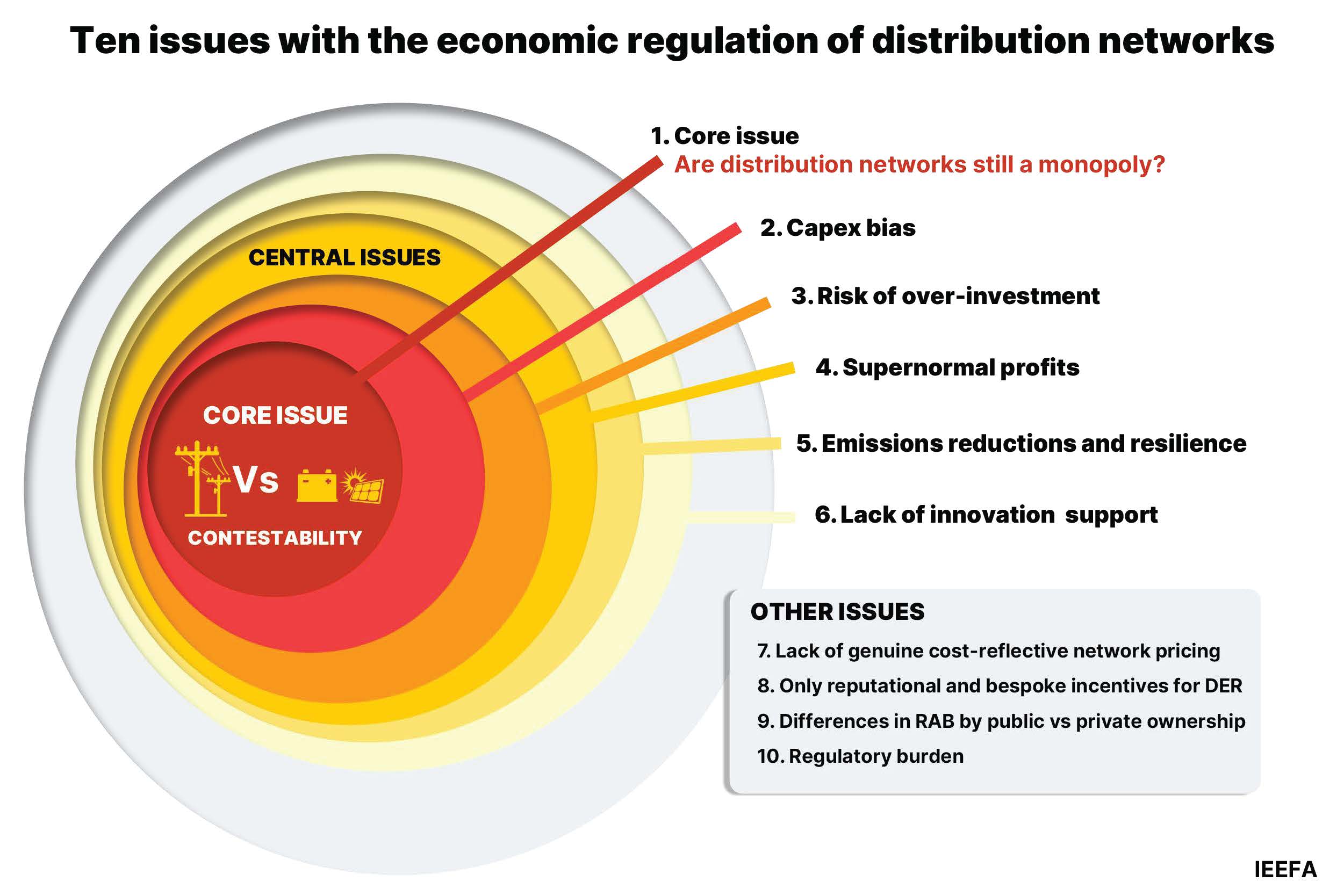Outdated regulation of local electricity networks leaves Australians exposed to risk of overinvestment

Key Takeaways:
The economic regulation of electricity distribution networks has a significant impact on electricity bills for households and businesses, and more broadly on Australia’s economic productivity, but the current system has failed to deliver efficient costs for distribution network services.
The current system is based on the assumption that distribution networks are the monopoly providers of network services. However, increasingly, distributed energy resources (DER) owned by households and businesses can provide network services, including easing congestion to avoid augmentation or replacement of network infrastructure.
Momentum is growing towards reform of the economic regulation of electricity networks, with overseas jurisdictions introducing contestability and payments for DER to provide network services, totex regulation and performance incentives for decarbonisation.
IEEFA recommends the Productivity Commission undertake a first-principles review of the economic regulation of distribution networks, which would identify ways to ensure efficient costs of network services in a high-DER world.
31 May 2024 - (IEEFA Australia): The Institute of Energy and Economic Financial Analysis (IEEFA) says Australia risks missing a huge opportunity to cut network costs and reduce electricity bills if it doesn’t reform the economic regulation of distribution networks.
Distribution network charges typically account for 25%-35% of electricity bills. Past overinvestment or ‘gold plating’ of distribution networks increased the value of the regulatory asset base (RAB) per customer by 60% between 2006 and 2015, causing large increases in customer bills. Now, a number of network businesses are proposing capital expenditure increases of more than 20%.
However, distributed energy resources (DER) like solar, batteries and smart appliances can provide network services such as congestion management, voltage control, reliability enhancement and network deferral. Enabling DER to provide network services can help bring down network costs for everyone.
A new report from IEEFA finds that, unless reforms are made to the existing regulations, the same expensive mistakes of the past could be repeated – with consumers left to bear the costs.
IEEFA recommends the Productivity Commission undertake a first-principles review of the economic regulation of distribution networks.
Dr Gabrielle Kuiper, IEEFA guest contributor and the report’s author, says: “The use of distribution networks has been falling as more households and businesses install rooftop solar and purchase more efficient appliances. The net result is that consumers are paying more for a service they use less.
“We should look to overseas counterparts where distributed network costs are being brought down. For example, in Great Britain, economic regulation enables consumers to be paid to help ease network congestion, by feeding electricity back into the grid from a battery on demand.”
In Great Britain, owners of DER such as electric vehicles and smart appliances can earn up to GBP33/kW/year in some locations. A 10kW home battery can early up to GBP331/year. By August 2023, 2.4GW of flexibility services had already been contracted by distribution networks in Great Britain for the 2023/24 year.
The core issue facing network economic regulation is whether distribution networks are contestable. IEEFA’s report details evidence that distribution networks are no longer a monopoly in remote areas of Australia. In south-west Western Australia, Western Power has decided to convert more than 52% of its network to an ‘autonomous network’ providing electricity through stand-alone power systems (SAPS) and microgrids.
Augmentation and replacement of networks are also becoming contestable, as DER could reduce the need for additional network build by providing grid support. There have already been trials of DER providing network services in Australia, including in Projects Networks Renewed, CONSORT, Edge, Edith and Symphony.
NOTES TO EDITORS
Dr Kuiper identifies an emerging, concerning risk of future over-investment comparable to that seen around 2006-2015, with distribution networks requesting higher capital allowances, potentially leading to increases in both the value of the RAB, and electricity bills.
Central issues with the current economic regulation of distribution networks are:
- A capex preference in expenditure decisions by distribution network service providers (DNSPs), presumably because of apparently generous returns.
- Regulations have not been updated following the addition of emissions reductions to the National Electricity Objective (NEO).
- The risk of repeating the 2006-2015 over-investment as a result of poor network planning for electrification.
- A lack of support for innovation.
- Supernormal profits resulting from the implementation of the regulation and from inadequate governance and performance monitoring of the regulator.
Read the report: Reforming the economic regulation of Australian electricity distribution networks
Media contact: Amy Leiper, ph 0414 643 446, [email protected]
About IEEFA: The Institute for Energy Economics and Financial Analysis (IEEFA) examines issues related to energy markets, trends, and policies. The Institute’s mission is to accelerate the transition to a diverse, sustainable and profitable energy economy. (ieefa.org)











